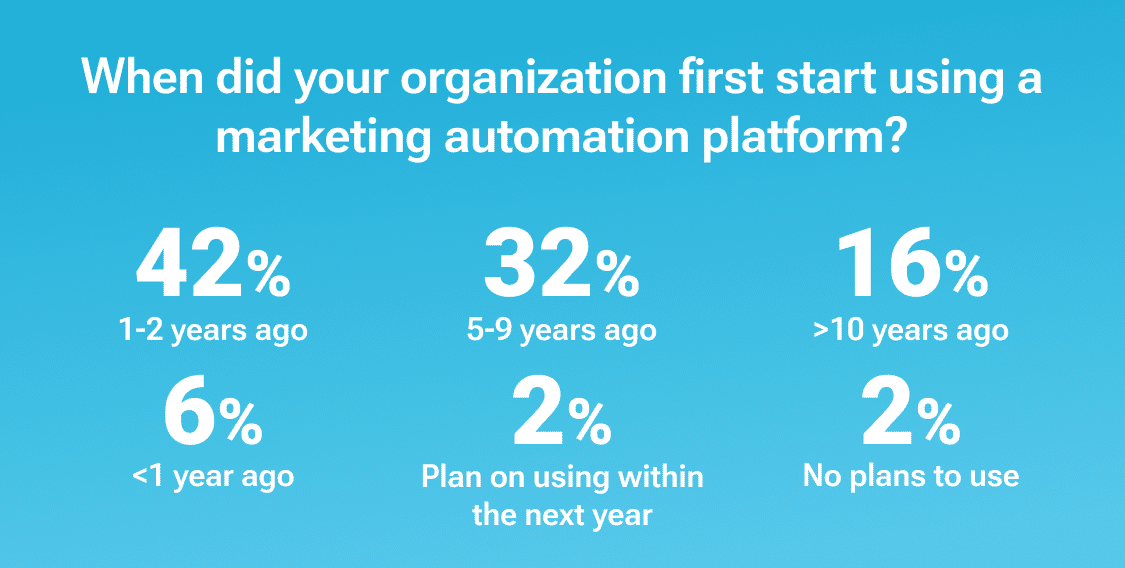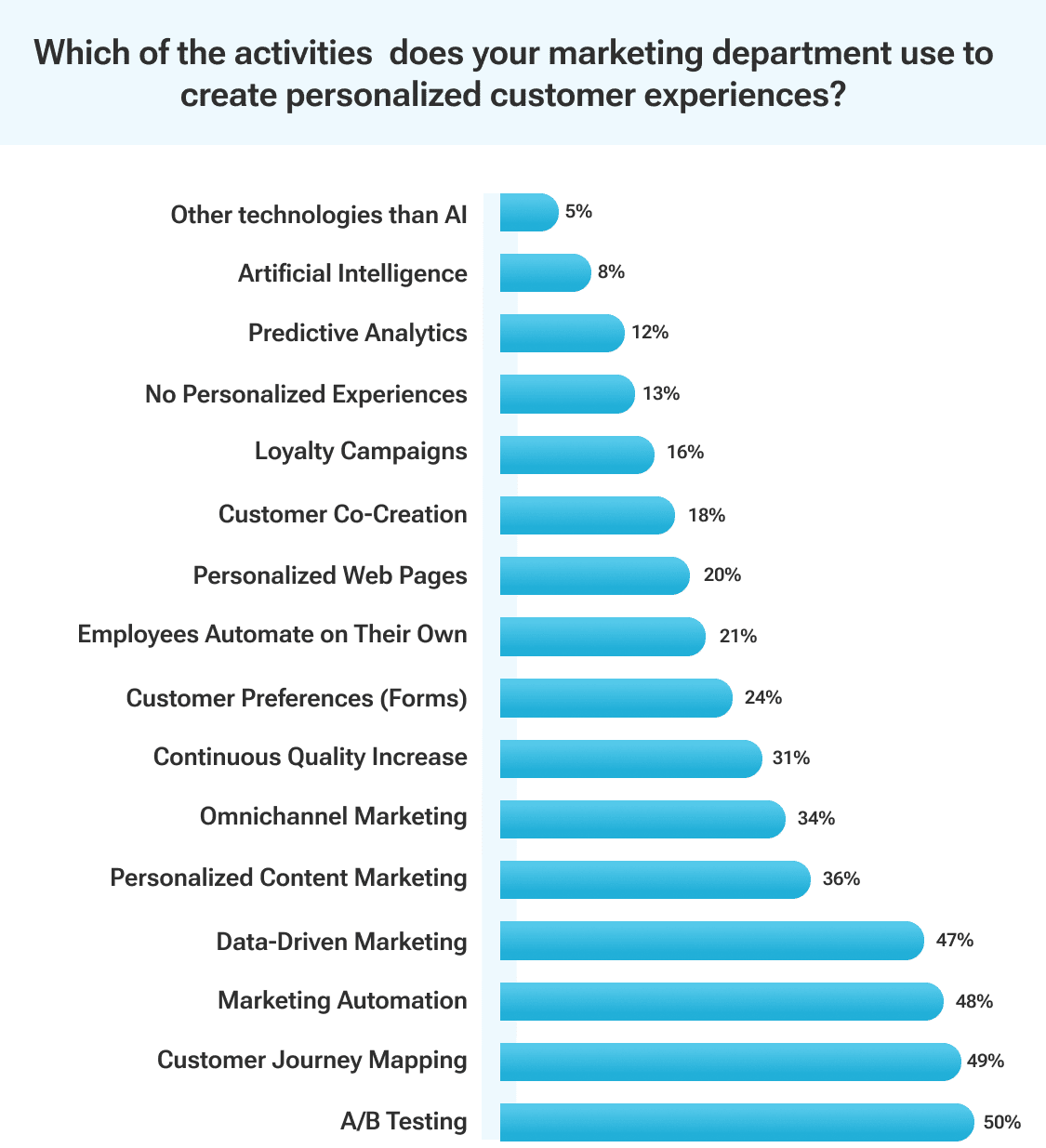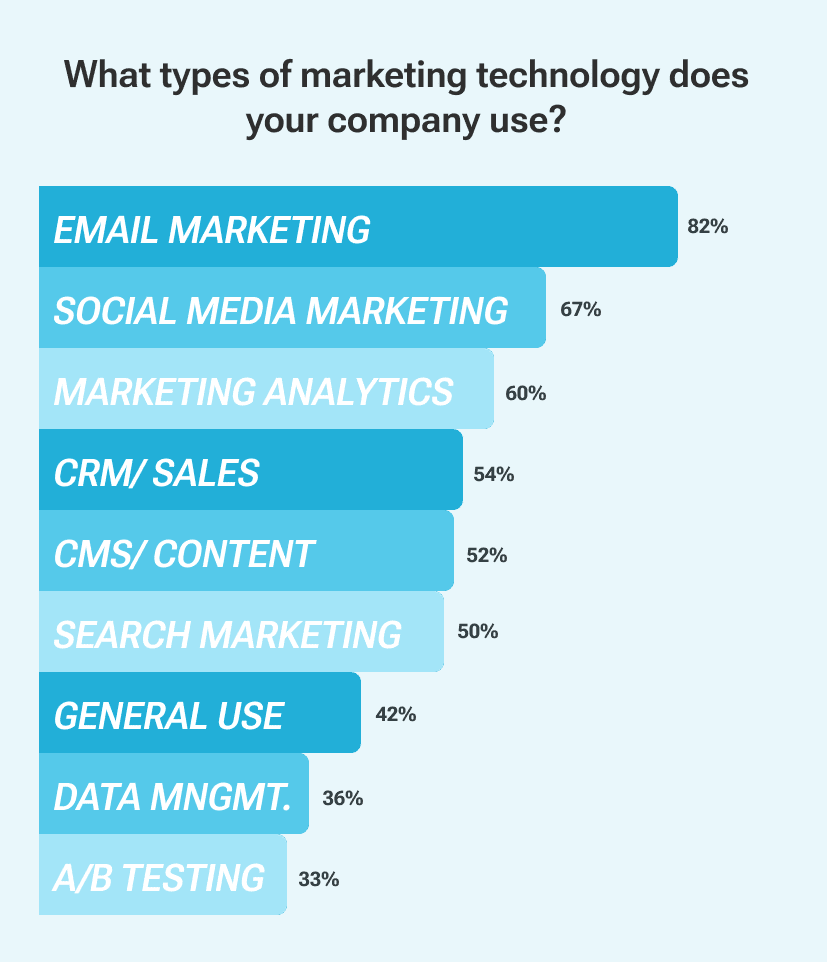Marketing automation is a process that automates the creation, management, and execution of B2B SaaS marketing tasks to improve efficiency and effectiveness.
It can be used for a variety of purposes, including email marketing, lead nurturing, lead scoring, and customer segmentation.
For B2B SaaS companies, marketing automation can be an essential tool for driving growth. In this blog post, we’ll explore how marketing automation can help B2B SaaS companies achieve their business goals, and offer some tips on how to get started with marketing automation.
As B2B SaaS marketers, you know that marketing automation can be essential to success. 80% of businesses are now using marketing automation to help increase profits. But with so many options on the market, it can be tough to choose the right solution for your business.
What can marketing automation do for your business?
Marketing automation does so much more than just digital marketing for B2B SaaS companies. It has the capability to automate digital activities such as social media campaigns and email newsletters, saving time for B2B SaaS marketers to focus on more important tasks.
Besides digital marketing activities, it can also help with segmentation and tracking of data relevant to key customer groups such as high-value customers or VIPs, thus helping with smarter decisions in terms of personalization and product development. By presenting dynamic content tailored to audiences based on their interests, marketing automation ensures that businesses are able to reach out to their customers on a deeper level.
By utilizing various B2B SaaS marketing strategies, business owners can create automated campaigns that save time by automating processes such as lead nurturing, personalized emails, and customer segmentation.
Automated marketing also helps to track ROI and accurately manage customer data for more precise targeting. As a result, the B2B SaaS marketer can save resources while still gaining quality leads through digital outreach efforts. With marketing automation, it’s never been easier for businesses to run successful digital campaigns that yield tangible results.
Personalize Workflows
Implementing marketing automation can help take some of the guesswork and repetitive tasks out of marketing. By personalizing your workflow and automating certain tasks, you can free up time to focus on strategy and creativity.
Personalized emails alone can generate six times more revenue than non-personalized emails, according to VentureBeat. When used correctly, marketing automation can be a powerful tool to help you close more deals and nurture more fulfilling relationships.
Here are a few tips for getting started with personalized workflows:
Define your buyer personas
In order to create personalized content, you need to first understand who your ideal buyer is. Take some time to create detailed buyer personas, including information about their demographics, interests, pain points, and goals.
Segment your list
Once you have a good understanding of your buyer personas, you can start segmenting your email list (or other lists) so that you can send more targeted content. For example, you might segment by industry, job title, or location.
Create a workflow
Once you have segmented your list, you can start creating a workflow for each segment. A workflow is simply a series of emails (or other content) that is delivered over time. The goal of a workflow is to move the prospect through the sales funnel, from awareness to consideration to decision.
Personalize your content
One of the most important things to keep in mind when creating personalized workflows is to make sure that your content is truly tailored to the individual. That means taking into account their specific needs, pain points, and goals. Generic content will not cut it here – it’s important to get specific.
Automate where possible
Workflows can be time-consuming to create and manage manually. Fortunately, there are many great marketing automation tools out there that can help automate repetitive tasks and free up your time for more strategic tasks.
You can, and will , create personalized workflows that will help you close more deals and nurture relationships with your prospects and customers.
Streamlined Processes
Streamlining your processes with marketing automation is essential for any SaaS business looking to increase efficiency and boost profits. 66 percent of marketing professionals report that the use of marketing automation has improved the speed and quality of their messaging significantly, according to Salesforce.
B2B SaaS Marketing automation can help alleviate tasks such as email campaigns, content delivery, and lead nurturing, allowing you to focus on more important tasks like customer acquisition and retention.
Streamlined Processes with Marketing Automation
Increased Efficiency
By automating mundane tasks like email campaigns and lead nurturing, businesses can free up time for more strategic initiatives like customer acquisition and retention.
Lower Costs
Automation reduces labor costs associated with manual tasks while still delivering personalized messages at scale.
Improved Performance
The ability to deliver highly tailored messages at scale leads to improved engagement and conversion rates in comparison to traditional B2B marketing methods.
Increased Insights
Automation tools collect data on customer behavior which can be used to gain valuable insights into the performance of different campaigns or strategies being used.
Getting Started with Automated Workflows
It is so imperative to keep your teams happy while maintaining a competitive advantage in your market.

Implementing automated workflows doesn’t have to be complicated or overwhelming – here are a few steps for getting started:
Identify Your Goals
Before selecting an automation tool or setting up automated workflows, take some time to identify your goals and create a plan of action. Ask yourself questions such as:
- “Which tasks take too much time?”
- “What type of emails should I send out?”
- “Who are we targeting?”
- “Which audiences will benefit?”
- “What is my expected ROI?”
Select the Right Tool
Once you know what you want to accomplish with your automation efforts, it’s time to select a tool that best fits your needs (there are plenty of great options out there). Make sure you choose one that offers the features needed for success – such as easy integration with existing systems, customizable workflow builders, intuitive analytics dashboards etc…
Set Up Your Workflow
Now that you have chosen the right tool for your needs it’s time to set up your automated workflow(s). Depending on the complexity of your project this could take anywhere from a few hours all the way up several days or even weeks depending on how many workflows you need set up etc.. Make sure you test each step along the way before launching!
Analyze & Adjust
Once your automated workflow(s) are up-and-running don’t forget about them! Monitor performance regularly so that you can make adjustments if needed in order to maximize effectiveness over time (a good rule-of-thumb is every 3-6 months but adjust according as needed).
How does marketing automation affect your customers?
Marketing automation is a powerful tool that benefits your SaaS company’s existing customers and enables teams to reach future potential customers.
Marketers can use automated tools and data to build better customer profiles and personalize campaigns, allowing them to meet their prospects’ needs more accurately.
Automated marketing solutions enable B2B SaaS companies to develop more targeted awareness campaigns, send personalized emails and track critical customer data all from one platform. Your SaaS company has the opportunity to automate user journeys and segmentation systems, so each customer receives tailored content. This can help your B2B SaaS company better understand a customer base and address any pain points quickly.
61 percent of marketers report that they have seen an increase in email open and click rates since implementing marketing automation, according to HubSpot. And, companies who use marketing automation see a 53% higher conversion rate than companies that don’t.
Companies that embrace automated marketing solutions have the capacity to generate highly persuasive messages that capture attention and compel new customers, allowing them to broaden the reach of their offerings.
Ultimately, leveraging the right marketing automation tools can be a game-changer for any B2B SaaS business in terms of transforming their customer experiences and cultivating loyalty along the way.

Marketing Automation for Voice & Data Companies…
Learn more about Insivia’s solutions here
Marketing automation from a CMO’s perspective
Anyone can write an article for you in attempt to give you the answers to your most important questions around automation in marketing, but what do established marketing professionals have to say about marketing automation today?
We reached out to Ann Boyd, CMO at Stoplight, a global platform to design, test, mock, and document APIs that leads with a design-first approach.
Boyd’s main expertise is brand, growth, and change management, but is a major advocate for innovation and automation in marketing.
“Marketing automation enables scale. All of us are trying to grow our reach, consideration, conversion and engagement,” she said.
Teams of all sizes with customer bases of all sizes can utilize marketing automation to their advantage.
“A team of individuals can only do so much. One to one or even one to many conversations are not sustainable when manually generated. For the user base, automation means more predictable engagement. For practitioners, automation means wider impact and less wasted time and energy in repetitive tasks. Importantly, measurement and optimization also become much easier in an automated system,” Boyd added.
As a professional with over 25 years of experience in marketing at major companies like Fox, Sony, or AOL to SaaS and technology firms, she had some advice for marketers curious about implementing automation techniques.
“The hardest part of getting automation right is the prep. There is no shortcut to launch a successful automation program for any aspect of your marketing. The process of thinking through the details of your audience, their journeys, the right messaging, and effective calls to action is essential. Unfortunately, this is not a small job for an intern,” she said.
Ultimately, the benefits significantly outweigh the necessary labor.
“It is your opportunity to define and implement the architecture of your marketing program with care,” Boyd said. “Think it through, get input, review and tweak. Once it’s running you will reap the benefits!”
What are the limitations of marketing automation?
Marketing automation is a powerful strategy to keep in your back pocket, but it’s important to remember that automation isn’t going to do everything for you. Automation can take care of mundane tasks and streamline processes, but it can’t manage complex customer interaction. Plus, automation also runs the risk of your message becoming stale and impersonal; automation usually won’t catch typos or mistakes in the creative process, either.
If automation technology isn’t applied correctly, it could result in communications or campaigns that lack the personal touch customers desire. Additionally, automation cannot replace manual decision-making in all cases; marketers must be mindful of the situations where automation should be used sparingly or not at all. Automated digital marketing requires careful monitoring to ensure strategies remain on track and produce desired outcomes.
Automation should always be part of an integrated B2B SaaS marketing strategy, rather than the only strategy employed. Its limitations shouldn’t be seen as a detriment so much as another reminder that human engagement will always remain one of the most powerful marketing tools available.
What are the most important features of marketing automation software?
Once you’ve begun the journey through automation, there are key features to keep in mind when choosing what automation tools work best for you. When evaluating marketing automation software, consider aspects like marketing workflows for automating marketing campaigns, analytics tools that show what’s working in your marketing strategy, and customization to tailor marketing activities to fit the needs of your organization.
- Comprehensive segmentation and personalization techniques should be at the top of your list.
- Inclusive email marketing and social media marketing capabilities are also essential.
- Automated lead tracking across a variety of channels and engaging with those audiences will become your biggest time saver.

Automation should make it easy to design effective campaigns that allow users to target their marketing efforts accurately and efficiently. Many marketing automation software solutions also provide several tools for analyzing data so that companies can make informed decisions about SaaS marketing strategies and products. A user-friendly interface is key because it makes it easier for everyone on your team to adopt these advantageous marketing practices.
By taking into account the key features of marketing automation software, you’ll be able to identify the right platform that works best for you. Knowing what features are available in the marketplace can make selecting marketing automation software a much simpler process.
How will marketing automation continue to evolve?
As the digital landscape continues to expand, the future of marketing automation software will become even more crucial. By taking the manual labor out of digital campaigns, marketers can focus the majority of their time on the creative aspects and imaginative endeavors to give customers the most engaging experience possible.

As technologies advance, marketing automation software will continue to become more comprehensive and even simpler for the average user to employ in the strategic management of their campaigns like email marketing.
These advancements in the efficiency and capabilities are slowly changing the way businesses create meaningful relationships with prospects and customers alike.
With such rapid developments secured, one can only imagine the marvels that await us all in the future of marketing automation solutions.
Key Takeaways
Ultimately, marketing automation has the potential to revolutionize your customer’s experience and boost the success of your business. By automating manual processes that can bog down customer satisfaction and monetization rates, you can save time, increase efficiency and make sure that data is up-to-date and consistent across all platforms and channels.
Keep in mind that there are some limitations to marketing automation software and key features should be taken into consideration when making your decision. With the advancements in technology and more uses for marketing automation coming up each day, this powerful tool will continue to evolve as a business necessity in the near future. The sky’s the limit with what you can do with marketing automation in streamlining customer journeys, boosting customer relationships, and increasing internal sustainability.
If you’re still on the fence about investing in marketing automation or need further guidance on the logistics, our team of experts at Insivis will take care of it all for you. So don’t delay any longer; schedule a call with us today to get started!
Written by: Tony Zayas, Chief Revenue Officer
In my role as Chief Revenue Officer at Insivia, I am at the forefront of driving transformation and results for SaaS and technology companies. I lead strategic marketing and business development initiatives, helping businesses overcome plateaus and achieve significant growth. My journey has led me to collaborate with leading businesses and apply my knowledge to revolutionize industries.
